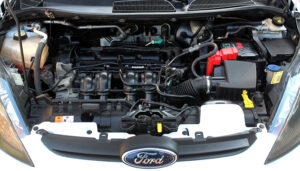Comprehensive Guide to Maintaining Ford Car Engines
Introduction
Owning a Ford means enjoying a balance of power, performance, and long-term reliability. Ford engines—whether EcoBoost, PowerStroke, or hybrid systems—are known for their advanced engineering and durability. However, proper Ford engine maintenance is essential to preserve that performance over time. This guide will walk you through the key maintenance routines, professional tips, and preventive measures every Ford owner should follow to keep their engine running smoothly for years

Understanding Ford Engine Types
Before diving into maintenance, it’s crucial to understand the type of engine under your hood.
-
EcoBoost engines are turbocharged, fuel-efficient powerplants designed to deliver high performance with lower emissions.
-
PowerStroke diesel engines are built for heavy-duty performance and towing capacity.
-
Hybrid powertrains combine traditional internal combustion with electric systems for maximum efficiency.
Each of these engines has specific maintenance needs, and following the correct procedures can significantly extend their lifespan.
Regular Service and Oil Maintenance
Engine oil is the lifeblood of your Ford vehicle. It lubricates internal components, prevents friction, and helps regulate temperature.
-
Oil Change Intervals: Ford recommends oil changes every 7,500 to 10,000 miles for modern models using synthetic oil. Older models may require more frequent changes.
-
Filter Replacements: Always change the oil filter with every oil change to ensure clean lubrication.
-
Common Mistake: Using non-Ford-approved oil can reduce engine efficiency and void warranty coverage. Always use oil that meets Ford’s specifications (e.g., Motorcraft SAE 5W-30).
Regular oil maintenance not only preserves performance but also enhances fuel economy.
Cooling System and Radiator Care
A healthy cooling system prevents engine overheating and costly damage.
-
Coolant Check: Ensure coolant levels are adequate and replace the fluid every 50,000 miles or as recommended in your manual.
-
Radiator Cleaning: Remove debris and check for leaks around hoses and joints.
-
Warning Signs: Rising temperature gauge, steam from the hood, or a sweet smell indicate potential coolant leaks.
Never open the radiator cap while the engine is hot—wait until it cools to avoid burns.
Battery and Electrical System
Even the most powerful engine needs a reliable electrical system.
-
Battery Inspection: Check terminals for corrosion and ensure they’re tightly connected.
-
Voltage Test: Use a multimeter to verify the battery maintains at least 12.6 volts when the engine is off.
-
Alternator Health: Dim headlights or a weak start may signal alternator issues affecting the engine’s power delivery.
Replacing an aging battery on time helps maintain smooth ignition and consistent engine performance.
Transmission and Engine Coordination
The transmission works hand-in-hand with the engine to deliver seamless performance.
-
Fluid Checks: Transmission fluid should be inspected every 30,000 to 60,000 miles, depending on driving conditions.
-
Warning Signs: Slipping gears, delayed shifting, or grinding noises often point to transmission issues that can affect engine stress levels.
-
Professional Service: Use only Ford-approved transmission fluids to maintain synchronization between engine and gearbox.
Proper transmission maintenance ensures optimal power transfer and fuel efficiency.
Seasonal Engine Maintenance
Different climates demand different care strategies.
-
Winter: Cold temperatures can thicken oil. Consider using low-viscosity oil and ensure the battery is in top condition.
-
Summer: Keep an eye on coolant levels and replace worn-out belts to prevent overheating.
-
Dusty or Sandy Environments: Replace air filters more frequently to protect the combustion chamber.
If you live in regions like northern Canada or the southern U.S., adapting your maintenance routine to the local climate will prevent unnecessary wear.
Common Engine Maintenance Mistakes
Even experienced car owners make preventable errors.
-
Ignoring the Check Engine Light—often a sign of sensor malfunction or emission issues.
-
Using cheap or low-octane fuel in engines that require premium-grade gasoline.
-
Over-washing the engine bay, which can damage sensors and electrical connectors.
-
Skipping scheduled services—every skipped inspection increases long-term repair costs.
Preventive care always costs less than major repairs.
Expert Tips from Ford Technicians
Ford-certified technicians recommend a few golden rules for engine longevity:
-
Follow your vehicle’s service manual—not general internet advice.
-
Use genuine Motorcraft parts and fluids.
-
Warm up your engine briefly before driving in cold weather.
-
Avoid unnecessary idling; it wastes fuel and causes carbon buildup.
-
Schedule a professional diagnostic every 12 months to catch hidden issues early.
These habits can add thousands of miles to your engine’s life expectancy.
Conclusion
Maintaining a Ford engine isn’t complicated—but it does require discipline. Regular oil changes, proper coolant management, and seasonal care can make all the difference. By following manufacturer guidelines and staying alert to warning signs, you can ensure your Ford’s engine continues to deliver the performance, reliability, and power that make it a global favorite.
A well-maintained Ford engine doesn’t just drive better—it lasts longer, saves money, and keeps you confident on the road






Leave a Reply